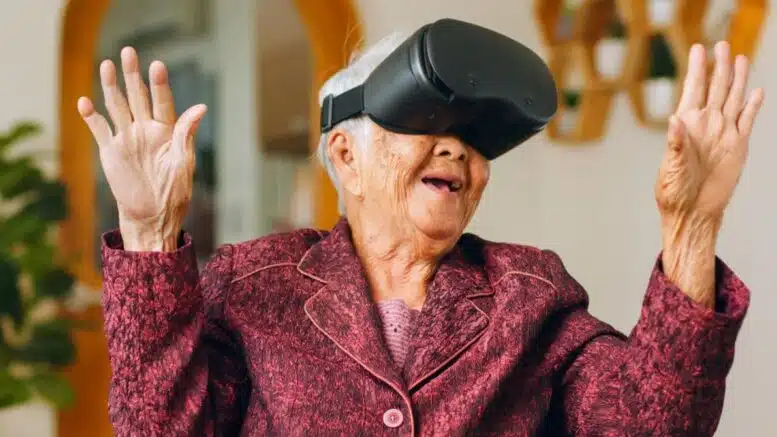The conversation around artificial intelligence exploded with the release of ChatGPT at the end of 2022, but it didn’t start (and won’t stop) there. So many industries are undergoing rapid change thanks to generative AI, and many new tools are being developed to help people at work, school, and home.
While the technology is exciting, the benefits of AI are a huge boon to one specific community: people with disabilities. Artificial intelligence has bolstered a ton of phenomenal advances that are revolutionizing how people with disabilities are able to engage with the world.
And this is just the beginning.
How Artificial Intelligence is Changing Accessibility
It’s no surprise that access to disability services and technologies has often failed to meet the needs of the global disabled community. In many places around the United States and the world, those with disabilities have had to rely heavily on family and community support to get their basic needs met. This often means that if somebody lacked a supportive family or lived in a community with minimal services, they had to do without the basic necessities of daily life.
While this lack of support still needs to be addressed in small and societal ways, artificial intelligence is primed to help fill some of the gaps. AI technology is still in its relative infancy, and we are only starting to scratch the surface of what it will be capable of in years and decades to come. However, we’re already seeing exciting new possibilities for the disability community.
Examples of Accessible Artificial Intelligence Technology
So, what does this mean in practical terms? How is AI helping those who have disabilities? New AI-enhanced apps, websites, and software are being rolled out seemingly on a daily basis, and many of them have powerful uses for the disabled community.
Here are some of the most powerful and promising use cases.
AI-Enhanced Speech-to-Text Software
Many of us think of Siri and Alexa as neat little conveniences to ask quick questions while driving or on the go. But for those with disabilities, these speech-to-text services can be an absolutely incredible quality-of-life improvement. Blind and visually impaired people have greater access to the internet thanks to these services and no longer have to rely on others to stay connected. This opens up a world of education, employment, and social engagement opportunities.
Visually impaired individuals are not the only ones benefitting from speech-enhanced AI tools. Many people with physical disabilities cannot type for extended periods and can now rely on these speech-to-text dictation tools. There are even tools in development that can learn the speaking patterns of individuals with speech impairments and translate them into easily intelligible outputs in real time.
The “Internet of Things” Powered by AI
There are a ton of AI and technology products available for the home. These items are often called “the Internet of Things” because they exist both in the digital and physical world. Examples include smart lights, smart locks, electronically-enhanced heating and cooling systems, appliances, and so much more.
Again, these are conveniences for the average person. But for a person with disabilities, these can be life-changing. Somebody with limited mobility, for example, may struggle to get up and change the thermostat or turn on the lights. However, thanks to AI technology, they can now use their voice or even a mobile app to quickly and easily modify their environment.
Generative AI
ChatGPT and Microsoft Gemini are popular AI chatbots (technically called “generative AI”). While these chatbots are great for answering quick questions and doing deep research, they also provide phenomenal service for people with disabilities. You can put in any prompt and get a quick response powered by AI.
This is a massive benefit for those with specific cognitive or physical disabilities that may prevent them from easily participating in society, employment, and education.
Examples of generative AI prompts that people with disabilities may benefit from:
- Write a professional email requesting an appointment change from 5 p.m. on Tuesday to 3 p.m. on Wednesday.
- Translate the following text to more plain language.
- Create a weekly shopping list for two vegetarians who need to eat a diabetic-friendly diet.
- Analyze the following text for tone, professionalism, and grammar.
Generative AI is rapidly improving, and leading artificial intelligence companies are constantly experimenting with new and exciting updates. Even as it is, this technology is beneficial for those who struggle to articulate or communicate, mainly via written communication.
AI is Promising a Bright Future for The Disability Community
There are so many emerging and advancing technologies that are and will continue to bolster the disabled community. Things like the recently released Apple Vision Pro have many exciting use cases and Apple continues to lead the way in accessible and adaptive technologies for disabled individuals. These new technologies will hopefully increase the ability for those with disabilities to participate and engage in society in more accessible ways.
The world is moving fast, and it’s essential that those with disabilities don’t get left behind. Innovators and technology companies should remain mindful of how their services can support those with disabilities. But from where we stand, the future is looking bright.
About the Author

Doug Lear, an Assistive Technology Specialist at Northwest Ergonomics, located throughout Oregon, Washington and the Pacific Northwest . Although Doug has worked for over 20 years in vocational rehabilitation, his passion lies in the field of Assistive Technology. Doug enjoys working with technology, but most of all, helping people.
